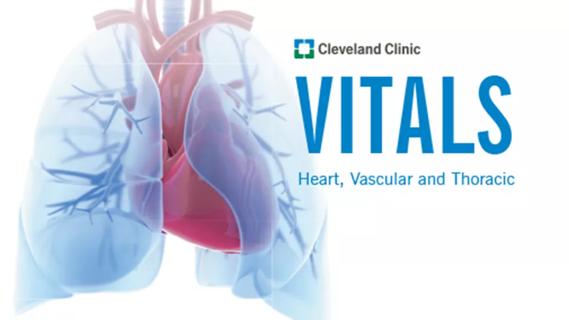Our latest volumes and outcomes data in these areas plus HOCM and pericarditis
Below we share recent volumes and clinical outcomes from a sampling of disciplines and subspecialty areas in Cleveland Clinic’s Miller Family Heart, Vascular & Thoracic Institute: thoracic surgery, lung transplantation, hypertrophic obstructive cardiomyopathy and pericarditis.
Advertisement
Cleveland Clinic is a non-profit academic medical center. Advertising on our site helps support our mission. We do not endorse non-Cleveland Clinic products or services. Policy
Number of general thoracic operations performed
Number of robotically assisted thoracic surgery procedures
Proportion of all lobectomies for stage I lung cancer (N = 120) that used video/robot-assisted thoracoscopic surgery
Proportion of thymectomy/thymic mass resections completed robotically (N = 33)
The following data and ratings are from the Society of Thoracic Surgeons (STS) General Thoracic Surgery Database (3-year period ending December 2023):



Total lung transplants performed, including 1 heart/lung and 5 lung/liver
Lung transplants performed after ex vivo lung perfusion (EVLP)
30-day survival rate following EVLP lung transplant

Outpatient visits for HOCM
New HOCM patients seen
Septal myectomy procedures (with or without other procedures) performed for HOCM
Observed-to-expected mortality ratio for septal myectomy*
Patients seen by our Pericardial Diseases Center
New patients seen by the Pericardial Diseases Center
Pericardial procedures performed
Pericardiectomies performed
Cleveland Clinic’s Heart, Vascular & Thoracic Institute has a long-established tradition of reporting volume and outcomes data across its various subspecialty areas. For more information like the data reported above, visit clevelandclinic.org/hvtioutcomes and clevelandclinic.org/e15.
Advertisement
Advertisement

Our latest performance data in these areas plus HOCM and pericarditis

Catch up with our latest volumes and outcomes data

Insights on bringing Cleveland Clinic even closer to becoming the best transplant enterprise in the world

Potentially cost-effective addition to standard GERD management in post-transplant patients

Consensus statement aims to increase use of the perfusion technology and raise transplant volumes

Reproducible technique uses native recipient tissue, avoiding risks of complex baffles

‘Concise clinical guidance’ from ACC distills key advances in imaging and pharmacotherapy

Key themes and insights into the family-caregiver experience